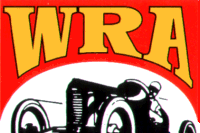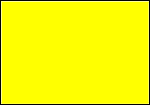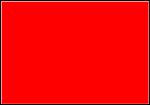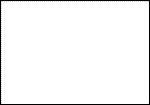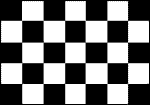Flag Meanings
While many of the flags have similar meanings, there are variations from track to track. The following guide to auto racing flags includes the most commonly used meanings. Racers and team members should always check with the track for any variations.
GREEN FLAG
Go!
The green flag is waved by the starter to indicate the beginning of a race, qualifying or practice session. It is waved after a caution to tell the drivers that the race has been restarted. The green flag also is an indication that the course is clear of any obstacles or debris.
YELLOW FLAG
Caution
The yellow flag is the signal for caution. When it is held stationary it is an indication that there is a problem ahead. Drivers must slow and refrain from passing. A waving yellow flag indicates immediate danger ahead. Drivers must be prepared to stop and cannot pass, although they can close the distance to the car immediately in front.
RED FLAG
Stop!
When a race is "red flagged" it is stopped due to some condition that has made the track unraceable. These conditions can range from weather problems to accidents to surface problems such as oil on the track. A red flag often means the track has been completely blocked by an accident or debris and there is no safe route through the problem. The red flag generally is preceded by waving yellow flags. As soon as a red flag is shown, drivers must come to a stop as quickly and safely as possible.
WHITE FLAG
Last Lap
When waved by the starter the white flag indicates that a driver is entering the last lap of practice, qualifying or a race. It is waved continuously to all cars following the leader until the leader approaches the finish line.
CHECKERED FLAG
Finish Line
The checkered flag is waved by the starter to indicate the finish of the race or practice session. The checkered flag is waved for all finishers. The race winner usually collects a checkered flag for a victory lap around the track.
BLACK FLAG
(Infraction)
While the use of the black flag and the black/orange flag can vary between series, the all-black flag generally means that there has been an infraction. The driver must bring the car to the pits on the next lap. If a Driver ignores a black flag, penalties may be imposed, including disqualification.
BLUE FLAG
Passing and Overtaking
The blue or passing flag has different meanings depending on how it is held and whether it is used during practice, qualifying or racing. Generally when it is held motionless it is an indication to a driver that there is a faster car following closely behind, but not yet close enough for a pass. A waving flag generally indicates that the driver is about to be overtaken and should take care to permit the following vehicle a safe pass. Some drivers resist moving over for an over-taking car when they feel they are racing for position. Controversy can follow the use of the passing flag. Some tracks use a blue flag with a diagonal yellow stripe.
Sources:
Championship Auto Racing Teams, Inc. (CART) Rule Book
Formula One Flags and Flagging Procedures
Indy Racing League Rule Book
WESTERN RACING ASSOCIATION
Celebrating Vintage Racing since 1982

